 According to the latest study from Martini Media, affluent consumers are 47 percent more likely to make an online purchase than their not-so-well-off counterparts. The report found that rich shoppers buy products and services after the holiday season and continue their sprees well into Q1.
According to the latest study from Martini Media, affluent consumers are 47 percent more likely to make an online purchase than their not-so-well-off counterparts. The report found that rich shoppers buy products and services after the holiday season and continue their sprees well into Q1.
Author: Eva Glass
Analysts call on Acer to rethink its strategy
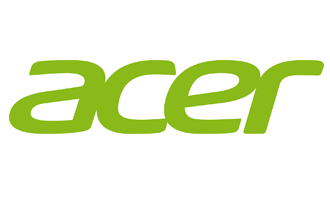 Last week Acer held its annual shareholder bash in Taiwan, which was marked by a strange mix of optimism and admissions that the company was unprepared for the boom in tablets. Acer chairman Wang Jeng-tang issued an apology to shareholders, as he failed to boost the company’s shares, but he reiterated Acer’s commitment to the traditional PC market.
Last week Acer held its annual shareholder bash in Taiwan, which was marked by a strange mix of optimism and admissions that the company was unprepared for the boom in tablets. Acer chairman Wang Jeng-tang issued an apology to shareholders, as he failed to boost the company’s shares, but he reiterated Acer’s commitment to the traditional PC market.
Toshiba rolls out a hybrid
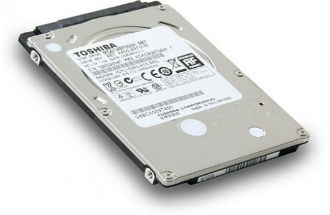 Toshiba has introduced its first 2.5-inch hybrid drives aimed at the fledgling Ultrabook market. For a second it looked like Toshiba was about to be outdone by WD and Seagate, as they joined the SSHD club a bit earlier.
Toshiba has introduced its first 2.5-inch hybrid drives aimed at the fledgling Ultrabook market. For a second it looked like Toshiba was about to be outdone by WD and Seagate, as they joined the SSHD club a bit earlier.
However, Tosh wasn’t taken by surprise and its 7mm hard drives should be on par with WD’s and Seagate’s similar offerings. The drives come in 320GB and 500GB capacities and both feature 8GB of NAND flash cache.
Although the spindle speed is 5400rpm, the hybrids perform better than plain 7200rpm drives, but the still fall short of SSD performance. However, they should end up four to five times cheaper than their solid state counterparts.
Toshiba did not reveal the exact pricing though, or availability date for that matter. However, both Seagate and WD are pricing their 7mm hybrids south of $100 and Toshiba’s SSHDs should probably have a similar price tag.
NAND prices continue surging
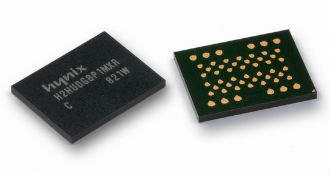 Prices of NAND flash memory are set to continue rising this month and beyond, as a result of strong demand for mobile devices. According to a report from DRAMeXchange, NAND prices are showing signs of rising in the second half of June due to inventory restocking.
Prices of NAND flash memory are set to continue rising this month and beyond, as a result of strong demand for mobile devices. According to a report from DRAMeXchange, NAND prices are showing signs of rising in the second half of June due to inventory restocking.
NAND contract prices rose two to four percent in the first half of June already, compare to May. DRAMeXchange says OEMs rushed to boost their inventories at lower prices, resulting in a shortage. The surge in demand is likely to push prices even further in the near future, despite the fact prices tend to go down seasonally over the summer, reports Focus Taiwan.
DRAMeXchange pointed out that no major manufacturers, aside from Toshiba, have any immediate plans to boost capacity in the third quarter. It concluded that NAND production between July and September is likely to rise slowly, at less than ten percent from the previous quarter.
However, demand for flash in the third quarter is expected to increase by more than 10 percent from the second quarter, resulting in a significant shortfall. Obviously, tight supply could push up NAND prices toward the end of the year.
Starbucks UK gets NFC
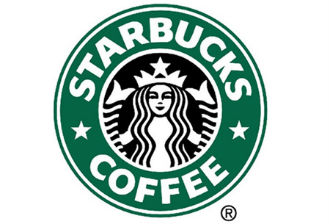 Starbucks has started accepting contactless payments in more than 550 stores in the UK. Barclaycard Global Payment Acceptance and Visa Europe are behind the tap-to-pay system, which seems to be gaining traction.
Starbucks has started accepting contactless payments in more than 550 stores in the UK. Barclaycard Global Payment Acceptance and Visa Europe are behind the tap-to-pay system, which seems to be gaining traction.
Starbucks says that cash payments are losing popularity fast, as only one out of three transactions are made in cash nowadays.
The system should make card transactions even faster, cutting queue times. Starbucks said the rollout of contactless follows other innovations implemented in the past, including a bespoke mobile payment app.
“Contactless payments are changing the way we pay in the UK. Transaction numbers are growing rapidly and with more than one in four UK Visa cards now contactless we’re expecting usage to quadruple again by the end of 2013,” said Mark Austin, Vice President at Visa Europe. “We’re delighted that Starbucks is joining the growing number of retailers who now offer contactless payments to their customers.”
There are currently over 27 million Visa contactless cards issued in the UK and contactless payments are accepted at more than 250,000 terminals in the UK, including on London Buses, which have seen more than 2 million transactions since launching contactless payments in December 2012.
Starbucks is behind the times and doesn’t pay much corporation tax. 711s and Family Marts in old Taipei have been piloting a combined NFC card for metro and other transactions for years.
Domino’s wants to drone you a pizza
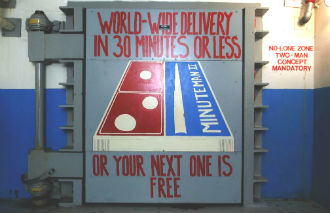 Drones don’t exactly have a good reputation nowadays, as most people associate them with flying killer robots raining death from above on militants and anyone who happens to get in the way. However, they can be fun, they can be used to save lives or in this case alleviate hunger.
Drones don’t exactly have a good reputation nowadays, as most people associate them with flying killer robots raining death from above on militants and anyone who happens to get in the way. However, they can be fun, they can be used to save lives or in this case alleviate hunger.
Domino’s Pizza is testing a pizza delivery drone, but we’re not sold on the concept, which basically looks like an elaborate PR stunt. The DomiCopter is a project cooked up by T+Biscuits and designed by UK based drone specialist AeroSight. Although it doesn’t pack Hellfire missiles, it can deliver a pizza to anywhere in a four mile radius in under 10 minutes, faster than a bloke on a scooter.
Of course, this is just a stunt and we won’t see a fleet of drones carrying around pizzas, curries and kebabs anytime soon. It probably costs a pretty penny, the range is limited and we’re not sure about efficiency, either. It also needs a human operator and trained drone operators tend to get paid a bit more than delivery boys.
A couple of decades ago Domino’s used to guarantee pizza delivery in 30 minutes or less. Eventually it dropped the promise for whatever reason, but not before it was borrowed by Minuteman missile crews who came up with an iconic and rather morbid Cold War joke.
Although we are suckers for PR stunts, we believe Domino’s would be better off investing the time and effort into making better tasting pizzas.
Smaller outfits miss out on m-commerce
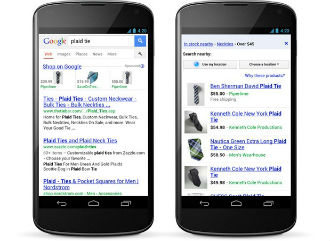 A research report released by TransFirst and ControlScan has found that small merchants need to step up their game in m-commerce and optimise their websites for mobile. Otherwise they might be missing out on some serious dosh.
A research report released by TransFirst and ControlScan has found that small merchants need to step up their game in m-commerce and optimise their websites for mobile. Otherwise they might be missing out on some serious dosh.
The survey, called Small Merchants and Mobile Payments: 2013 Survey on Technology Awareness and Adoption, found that a staggering 82 percent of e-commerce merchants don’t even know whether a purchase on their website came from a mobile device or a PC.
This is a rather alarming figure, since data from those that do distinguish between PC and mobile shoppers indicates that mobile visitors account for a significant portion of online sales, and mobile is growing fast. A survey conducted last year found that 10 percent of respondents used tablets and smartphones to accept credit card payments, but the figure has shot up to 17 percent in less than a year’s time.
Another key finding of the survey shows 49 percent of e-commerce merchants know their websites are not currently optimised for mobile devices and an additional 17 percent say they don’t know or are unsure about their site’s current status. This indicates that as many as two thirds of these merchants may be putting up roadblocks to the growing number of mobile consumers.
“The mobile consumer is knocking at the small merchant’s door,” said Craig Tieken, Director of Product at TransFirst. “Business owners who aren’t already up to speed with mobile payment acceptance need to have a viable plan of action to get there.”
Dave Abouchar, Senior Director of Product Management for ControlScan, said the survey shows that small merchants have a real business need to adopt mobile trends. He stressed that now is the time to embrace the new trends if they don’t want to miss out.
Asustek blames Win8 for poor sales
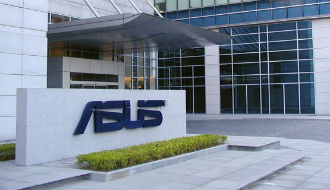 Asustek has cut its Q2 forecast for notebook and tablet shipments and unsurprisingly it is blaming soft demand for Windows 8 for its woes.
Asustek has cut its Q2 forecast for notebook and tablet shipments and unsurprisingly it is blaming soft demand for Windows 8 for its woes.
The company now expects its second-quarter notebook shipments to fall 10 percent sequentially to 4.23 million units. Back in May the Taiwanese outfit said it hopes to ship 4.8 million notebooks in the second quarter.
Surprisingly tablet shipments were also revised downward by 10 percent to 2.7 million units. Since Asus is moaning about Windows and it is expected to have a strong Android lineup, this may indicate that demand for Windows 8 tablets is even worse than expected – and it wasn’t very optimistic to begin with.
The gloomy figures were delivered by Asustek CFO David Chang during a shareholder meeting on Monday, but he also had a caveat. Chang pointed out that notebook and tablet shipments are poised to grow significantly in the third quarter, thanks to new product launches. Fourth quarter sales should remain flat, or see small gains. Despite the revised forecast, Chang said the company is on track to meet its original goal of shipping 20 to 25 million notebooks and 12 million tablets this year, reports Focus Taiwan.
Asustek CEO Jerry Shen also hinted at a strategic shift from PCs to tablets, which already make up 15 to 20 percent of the company’s revenue. By the second half of the year they might contribute between 20 and 30 percent, as the company managed to boost margins on tablets to a similar level to notebook margins. Shen said this was done by clever research and development, with a pinch of cost cutting.
Needless to say this is very good news for Asus, as the company already has a top notch Android tablet portfolio, from the low-end to its posh Transformer series. Cutting tablet production costs is also good news for Windows tablets in the long run, but they won’t do well this year.
Online shops get physical
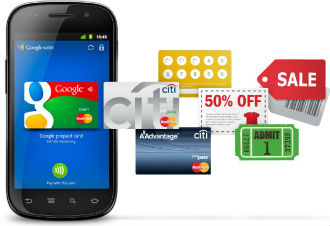 America pioneered online shopping and its e-commerce outfits are now spearheading another trend. They are thinking of opening traditional brick and mortar stores.
America pioneered online shopping and its e-commerce outfits are now spearheading another trend. They are thinking of opening traditional brick and mortar stores.
Online juggernaut Amazon is said to be actively exploring a store concept and it is not alone. Bonobos, Warby Parker, Sigma Beauty and others are doing it as well.
It might sound surprising, given the e-commerce boom, but online outfits are looking ahead. They can’t hope to sustain current growth rates much longer, so they might be compelled to branch into physical stores sooner or later.
“But we wanted to put a face on the brand, and we wanted people to touch and feel the product,” Sigma cofounder Simone Xavier told CPA Practice Advisor.
Although online retailers tend to have much lower costs than their traditional counterparts, websites can’t completely replace showrooms and stores, or good salespersons for that matter.
“It is strange to see e-commerce sites open physical stores,” said retail consultant Jeff Green. “But when you think about, it’s not surprising. The most successful retailers are going to have a combination of bricks-and-mortars and digital sales. For online retailers, you might as well get to the sale as close as you can.”
Of course, online retailers will stay true to their roots and their physical stores won’t replace online. Many probably won’t bother with physical stores at all and even those that do are likely to face a lot of challenges.
High Streets do better than malls
 According to figures released by the British Retail Consortium (BRC) and Springboard, footfall in UK shops fell by 0.7 percent in May, year on year. Shopping centres saw the biggest decline, with a 1.7 percent drop, but there is some good news to report as well.
According to figures released by the British Retail Consortium (BRC) and Springboard, footfall in UK shops fell by 0.7 percent in May, year on year. Shopping centres saw the biggest decline, with a 1.7 percent drop, but there is some good news to report as well.
Retailers in London and Scotland outperformed the rest of the country, with footfall going up by 2.6 percent and 3 percent respectively.
The BRC reckons the good showing in Scotland can be attributed to good weather last month and the fact that sales were down over the first four months of the year. However, some regions weren’t as lucky. Footfall in Wales was 1.1 percent lower than a year ago, Northern Ireland saw a 3.1 percent slump, while the West Midlands and East Midlands were down 2.9 and 2.6 percent respectively.
Helen Dickinson, director general of the BRC, pointed out that conversion rates were relatively good. Although people made fewer shopping trips, they were willing to pounce on good deals and seasonal promotions.
In addition, high streets outperformed shopping centres in the first five months of the year. Although the high street saw a one percent drop, shopping centres were down 1.7 percent.
“Footfall across all retail locations in the past few months has definitely been proving to be very volatile, particularly in high streets, which fell by seven percent in March, rising by 3.4 percent in April and declining by one percent in May,” said Diane Wehrle, retail insights director at Springboard.
Larger regional cities saw the biggest improvements in footfall, but small towns didn’t fare well. Shoppers are still willing to drive to bigger cities and out of town shopping centres, in spite of good weather. Footfall in out of town locations was up 1.2 percent compared to a year ago.
Blackberry UK boss heads for the door
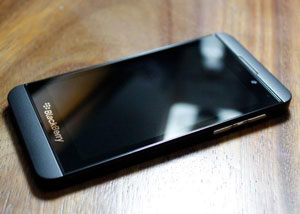 Blackberry UK and Ireland managing director Rob Orr has quit after just ten months on the job. According to Mobile News, Orr has quit with “immediate effect” and his departure has been confirmed by the company.
Blackberry UK and Ireland managing director Rob Orr has quit after just ten months on the job. According to Mobile News, Orr has quit with “immediate effect” and his departure has been confirmed by the company.
Blackberry said Orr resigned his post with immediate effect and wished him well for the future. Orr took over the UK operation of the fledgling smartphone maker in August. He joined the company in June 2006 and he became vice president of Blackberry EMEA three years later.
Earlier this year Orr oversaw the launch of Blackberry 10, which at this rate might very well be the company’s last operating system. Blackberry released two smartphones based on the new platform, the Z10 and Q10, but over the last five years the mobile landscape changed drastically and Blackberry’s traditional market has slowly evaporated, as business geeks traded in their trusty QWERTY crackberries for iPhones and Galaxies.
HP launches tablet POS thing
 Hewlett Packard has introduced a new point of sale (POS) solution aimed at retail and hospitality businesses.
Hewlett Packard has introduced a new point of sale (POS) solution aimed at retail and hospitality businesses.
The HP ElitePad Mobile POS Solution is basically and HP ElitePad tablet with HP’s retail jacket for ElitePad. It is designed to integrate into existing IT infrastructure and connect to store systems on the go.
As many as 57 percent of retailers plan to implement tablets in their stores over the next one to three years and HP is clearly trying to cash in on the trend.
The package includes a 1D/2D barcode scanner and three-track encrypted bi-directional magnetic stripe reader (MSR). It also has an integrated detachable hand strap and an optional secondary battery for extended endurance.
“Consumers expect the same personalised experience they get online or on their mobile device in a retailer’s brick-and-mortar store,” said Kobi Elbaz, director, Commercial and Retail Solutions, Printing and Personal Systems Group, HP EMEA. “With the HP ElitePad Mobile POS Solution, store managers and associates are empowered to move the sale from behind the counter, giving them the ability to assist the customer right on the sales floor for immediate customer satisfaction.”
The HP ElitePad is available in EMEA, but the HP Retail Jacket for the tablet will show up in September.
Seagate reshuffles sales and marketing team
 Seagate has announced a few changes in its sales and marketing team, most of which are centred on EMEA. The company said it reshuffled the team to address growth opportunities in cloud, SSD and branded storage markets.
Seagate has announced a few changes in its sales and marketing team, most of which are centred on EMEA. The company said it reshuffled the team to address growth opportunities in cloud, SSD and branded storage markets.
Mark Whitby, Seagate’s vice president of EMEA Sales & Marketing and Global Channel Sales, said the changes will ensure that Seagate positions itself to address evolving market opportunities.
“The storage market is both growing and changing rapidly, and the changes we have made to our senior management team are intended to keep Seagate in the forefront of that market,” he said. “In particular, we want to take full advantage of the huge potential we see in areas such as cloud computing, solid state drives and in the market for branded storage solutions.”
In his expanded role as Vice President of EMEA Sales & Marketing and Global Channel Sales, Mark Whitby has now been charged responsibility for the company’s global distribution channel sales, developing and leading strategy and delivery of the business worldwide.
Joe Fagan is being appointed Senior Director of Cloud Initiatives, EMEA. In this newly created position he will be responsible for shaping Seagate’s Cloud strategy and engagement in the region.
Dimitri Galle has been appointed Senior Director of Sales and Marketing, Branded Products, EMEA. In his new position he will be responsible for sales and marketing of all Seagate-branded retail products across the region.
Bernd Breinbauer has been appointed to the newly created role of Director of EMEA SSD Sales with responsibility for developing sales of the company’s comprehensive solid state drive portfolio across the region. Seagate entered the highly competitive SSD market just a few weeks ago and Breinbauer obviously has a lot of work ahead.
HP taps Google apps and services for SMB boxes
 Hewlett Packard has joined the Google Apps Reseller program and the first products packed with preinstalled Google apps are on the way. The first phase of what HP calls “HP SMB IT in a Box” will feature existing HP hardware, including PCs and printers, but it will also ship with an assortment of Google apps.
Hewlett Packard has joined the Google Apps Reseller program and the first products packed with preinstalled Google apps are on the way. The first phase of what HP calls “HP SMB IT in a Box” will feature existing HP hardware, including PCs and printers, but it will also ship with an assortment of Google apps.
The Goog suite includes Google Apps for Business, Google cloud based communication and collaboration tools, or in other words everything from Gmail and Docs, to Google Drive and IM. An HP management software layer will be on top of them to simplify environment and cut operating costs.
“HP recognises the constantly evolving needs of SMB customers in today’s dynamic business environment,” said Ron Coughlin, senior vice president and general manager, Consumer PCs and Solutions, HP. “Together with HP’s channel partners, we will offer our customers an incredible bundle of PCs, printers and Google Apps for Business, enabling business owners to focus on their customers instead of worrying about IT.”
HP says the HP SMB IT in a Box will continue to grow to encompass all the technologies SMBs need. Eventually, the solution will include integrated consoles for resellers, IT administrators and end users, allowing easy access to the entire solution, including Google Apps for Business.
The company was quick to point out that its collaboration with Google already includes Android and Chrome devices. Although it looks like a routine PR line, it could be also viewed as a shot across Microsoft’s bow.
HP SMB IT in a Box will be offered through HP’s network of reseller partners. The initial offering is expected to be available to select resellers in the United States in July followed by broader availability worldwide by the end of the year.
Samsung to launch smartphone accessory business
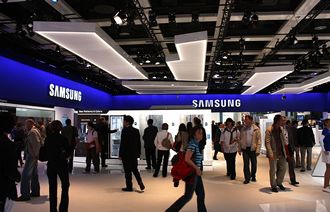 Samsung might be about to step up its retail game. According to Korean tech site Etnews, the smartphone giant is going to launch an online shopping mall for phone accessories. Aside from making more cash, Samsung hopes the new service will help it grow consumer loyalty.
Samsung might be about to step up its retail game. According to Korean tech site Etnews, the smartphone giant is going to launch an online shopping mall for phone accessories. Aside from making more cash, Samsung hopes the new service will help it grow consumer loyalty.
The online shopping mall is set to debut in Europe in early July. It will then expand to the rest of the world, with a bit of help from Best Buy stateside. Android Community reports Samsung and Best Buy will open around 1,400 retail locations, both online and offline, but the European push seems to be centred on online.
Of course, most of the accessories will be manufactured by Samsung, although some of them will be supplied by its partners. The details of the plan are still unclear, though. Samsung will probably focus on pricey accessories like wireless charging devices and docks, but there is a chance it will start peddling everything, including cheap screen protector films. The service will also carry some Samsung flagship phones.
The global phone accessory market is worth an estimated $44 billion. With Samsung’s huge market share, it is clearly a burgeoning market that needs to be tapped.





